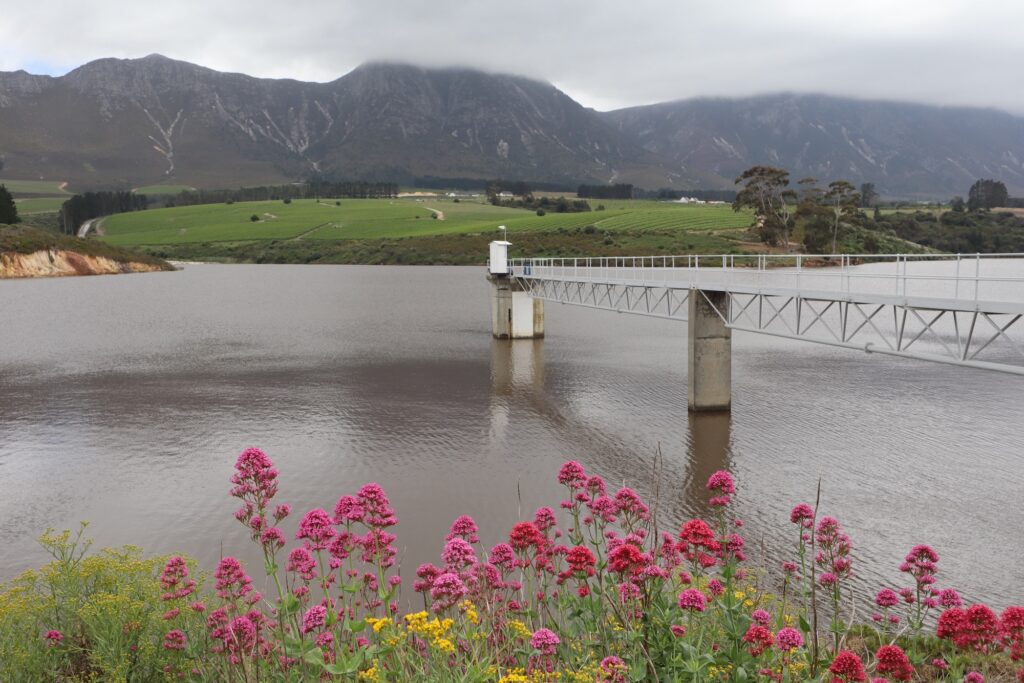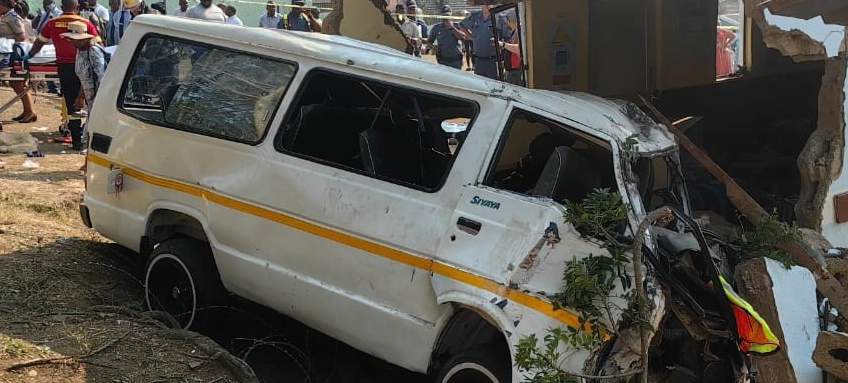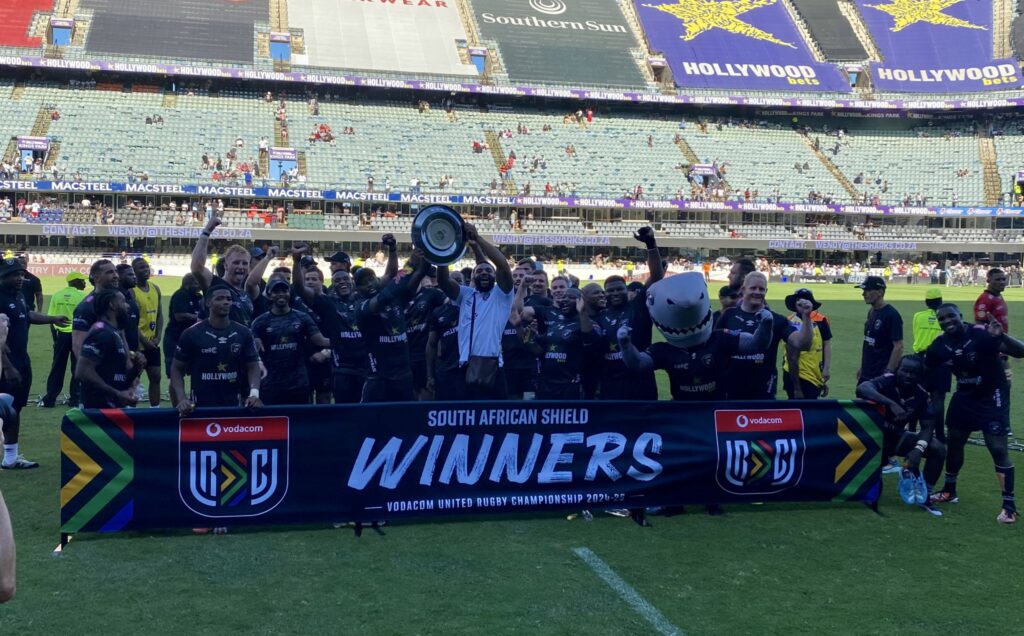
Across South Africa, many municipalities often withdraw more water from reservoirs than is allowed, quite frequently without facing any repercussions.
The Overstrand Local Municipality in the Western Cape serves as a prime example. Since 2003, it has exceeded its annual limit of 2,800 megalitres from the De Bos Dam on the Onrus River over 80% of the time. This information is supported by monthly water usage reports submitted to the Breede-Olifants Catchment Management Agency (BOCMA), which manages the Onrus River catchment on behalf of the Department of Water and Sanitation (DWS).
ADVERTISEMENT
CONTINUE READING BELOW
In the Eastern Cape, the Nelson Mandela Bay Municipality has a history of excessive extraction from the Kromme and Kouga systems, having withdrawn as much as three times its allocated amount from the Churchill and Impofu dams within the Kromme system in the 2021/22 period.
The adjacent Kouga Municipality has also shown similar patterns of over-extraction, particularly from the Churchill Dam. Further inland, the Amathole District Municipality is currently over-extracting from multiple surface water sources, exceeding its daily limit of three million litres from dams within the Stutterheim scheme.
In KwaZulu-Natal, uMngeni-Uthukela Water is licensed to extract 470,000 megalitres annually from the uMngeni Water Supply System, which services the municipalities of eThekwini, Msunduzi, Ugu, Ilembe, and uMgungundlovu. However, it has consistently exceeded this limit in recent years; a DWS investigation revealed that in 2023, it withdrew nearly 30,000 megalitres over its allowed quota.
In Gauteng, rising demand from municipalities has resulted in Rand Water exceeding its licensed extraction limit from the Vaal Dam every year since 2018. In the fiscal year 2023/24, Rand Water’s withdrawals exceeded its allocation by 193,000 megalitres. To address this challenge, Rand Water has formed agreements with metropolitan municipalities (City of Johannesburg, City of Tshwane, and City of Ekurhuleni), but adherence to these limits has been inconsistent, leading to water supply shortfalls.

uMngeni-Uthukela Water is allowed a maximum extraction of 1,288 Ml/d from KwaZulu-Natal dams, accounting for a 2-4% loss during treatment. Demand has spiked since 2018, causing the bulk water supplier to exceed its allocation since December 2020. The DWS has imposed a deadline of 12 months from October 2024 for reversing the demands of municipalities in greater Durban back to their legally mandated levels.
Avoiding Accountability
It is illegal to over-extract from a regulated water source under the National Water Act. The DWS requires significant water users to monitor and report their water usage regularly or upon request; however, spokesperson Wisane Mavasa informed GroundUp that this data “is not consistently entered into departmental systems.”
“Only one unit has access to this information, and the officials receiving it might not be informed of the lawful extraction limits, as this is not a requirement of the reporting mechanisms. The DWS acknowledges this as a problem,” Mavasa explained.
The Overstrand municipality is a case in point. Documentation that GroundUp holds indicates that DWS became fully aware of the municipality’s over-extraction from De Bos Dam only after it requested water usage reports in 2023. That year, Overstrand achieved an unprecedented 99.99% DWS Blue Drop certification, making it the top performer in the country for water management.

Since 2003, the Overberg Municipality has surpassed its water allocation more than 80% of the time.
Carin Bosman, a water governance expert at consultancy CBSS, who has worked at DWS both pre- and post-1994, points out that the department lacks a centralized repository for water usage data.
“There is no system that monitors who is over-extracting. This represents a substantial accountability gap and is unsustainable in a water-stressed nation like South Africa,” she remarked.
Mavasa noted that taking action against a non-compliant municipality has become considerably more complex since the adoption of the Constitution in 1996, which redefined local authorities as a sphere of governance rather than merely a tier.
“Typically, the DWS notifies the alleged violator of their non-compliance, and if they cannot demonstrate compliance, the DWS aids them in drafting strategic plans to develop supplementary resources to meet future demands and to enhance reporting systems for monitoring water use,” he added.
Read: State’s R1.3trn infrastructure plans unaffected by budget dispute
Being aware of non-compliance does not always lead to prompt action, and legal steps are infrequently taken against offenders.
In the case of Overstrand, both DWS and BOCMA were aware of its patterns of over-extraction since the early 2000s but only began investigating the concern in 2023 after local environmental activists called for action.
Official complaints about over-extraction were submitted against the municipality in 2024, resulting in BOCMA starting a compliance monitoring and enforcement process. The findings uncovered that the municipality had historically over-extracted for much of the past decades. BOCMA CEO Jan van Staden met with Overstrand Municipal Manager Dean O’Neill on February 27, 2024, requiring the municipality to regularly report its water usage and align its water extraction with court-mandated limits. Van Staden remarked that all past instances of non-compliance are effectively “water under the bridge.”
Potential Consequences
In June 2024, during a speech to the Strategic Water Partners Network concerning the Vaal Dam – the main water source for much of the urban highveld – DWS Director General Sean Phillips outlined the serious repercussions of over-extraction.
“Permitting [Rand Water] to extract more would be irresponsible,” Phillips stated. “In the event of a drought, this could trigger a day zero scenario in Gauteng.”
Read: SA’s infrastructure drive is gathering pace
Former Nelson Mandela Bay Municipality Executive Mayor Retief Odendaal noted that over-extraction from the Kromme system’s dams during the dry years of 2021/22 brought the municipality to a critical point.
ADVERTISEMENT:
CONTINUE READING BELOW
“The municipality was extracting up to 300% more than its legal allowance from this system, putting the Churchill Dam at risk of being decommissioned. Had that happened, a quarter of the population would have been left without water indefinitely,” he detailed.
Environmental groups in Overstrand argue that the municipality’s over-extraction from De Bos Dam has led to a continuing environmental crisis downstream, affecting the 12,000-year-old Onrus peatland and causing siltation in the well-known Onrus Estuary.
Read: Rand Water warns of system collapse as usage jumps
Anton Kruger from the Overstrand Environmental Organisation explained, “Over-extraction from De Bos [Dam] has hindered the dam from overflowing during the wet season, resulting in the drying out of the downstream peatland. In 2018, the peatland caught fire and burned for nine months. It became unstable, leading to 80% of the peatland washing downstream into the Onrus Estuary after Overstrand received 135mm of rain in 48 hours in September 2023, permanently altering it.”
The estimated cost to partially rehabilitate the peatland and estuary stands at R200 million, of which a portion will be funded by billionaire Johann Rupert, whose property was impacted by the environmental disaster.
The Overstrand municipality has yet to acknowledge responsibility for this calamity; however, O’Neill stated they “have initiated a project to restore and rehabilitate the entire Onrus catchment, focusing on the Onrus Peat Wetland.”
Motivations Behind Over-Extraction
Mavasa explains, “Many cases of over-abstraction are justified by the need to ensure basic water availability for residents, addressing equipment failures, vandalism, and power outages, all of which lead to extractions surpassing permitted amounts from the source.”
O’Neill highlighted that Overstrand is trying to meet the needs of a population that has more than doubled since the 2000s.
“We launched an extensive groundwater abstraction program to augment the available water, but achieving full production from all boreholes year-round, 24/7, is nearly impossible due to breakdowns, maintenance, power interruptions, and routine servicing,” O’Neill remarked.
Read: Sapoa, JCCI unite to fix Joburg’s infrastructure
uMngeni-Uthukela Water spokesperson Siyabonga Maphumulo indicated that the unexpected surge in demand from KwaZulu-Natal municipalities stems primarily from increased water loss.
“Some municipalities report water loss rates of 40-50%, and many do not allocate enough funds for maintenance and rehabilitation, exacerbating this demand. We typically expect a natural growth rate of 1.5% per year, but it’s clear that current increases are significantly surpassing this rate. To keep up, we’ve been exceeding our licensed extraction volumes,” he stated.
Amathole District Municipality spokesperson Sisa Msiwa noted that the increase in water usage is attributed to population growth, enhanced service standards, and regrettably, a rise in water loss due to leaks.
“The aging infrastructure in Stutterheim, particularly the asbestos pipes, is very prone to leaks,” she explained.
Improving Systems and Accountability
Mavasa shared that the DWS “has begun consolidating its various regulatory systems into the Integrated Regulatory Information System. This will provide our national and regional offices with access to data per [water] user. The department is also drafting regulations that will require users to upload all self-regulation reports onto this system and will seek public input once the regulations are published in the coming months.”
Read/Listen: Could smart tech be the solution for SA’s water infrastructure woes?
Any established repository should be publicly accessible, according to Bosman.
“This information is public knowledge. There may be valid reasons for over-extraction, but unless basic information is accessible, community members cannot hold their leaders accountable for water management practices,” she concluded.
This report was made possible through funding and editorial support from the Southern Africa Accountability Journalism Project.
© 2025 GroundUp. This article was first published here.
Follow Moneyweb’s in-depth finance and business news on WhatsApp here.






